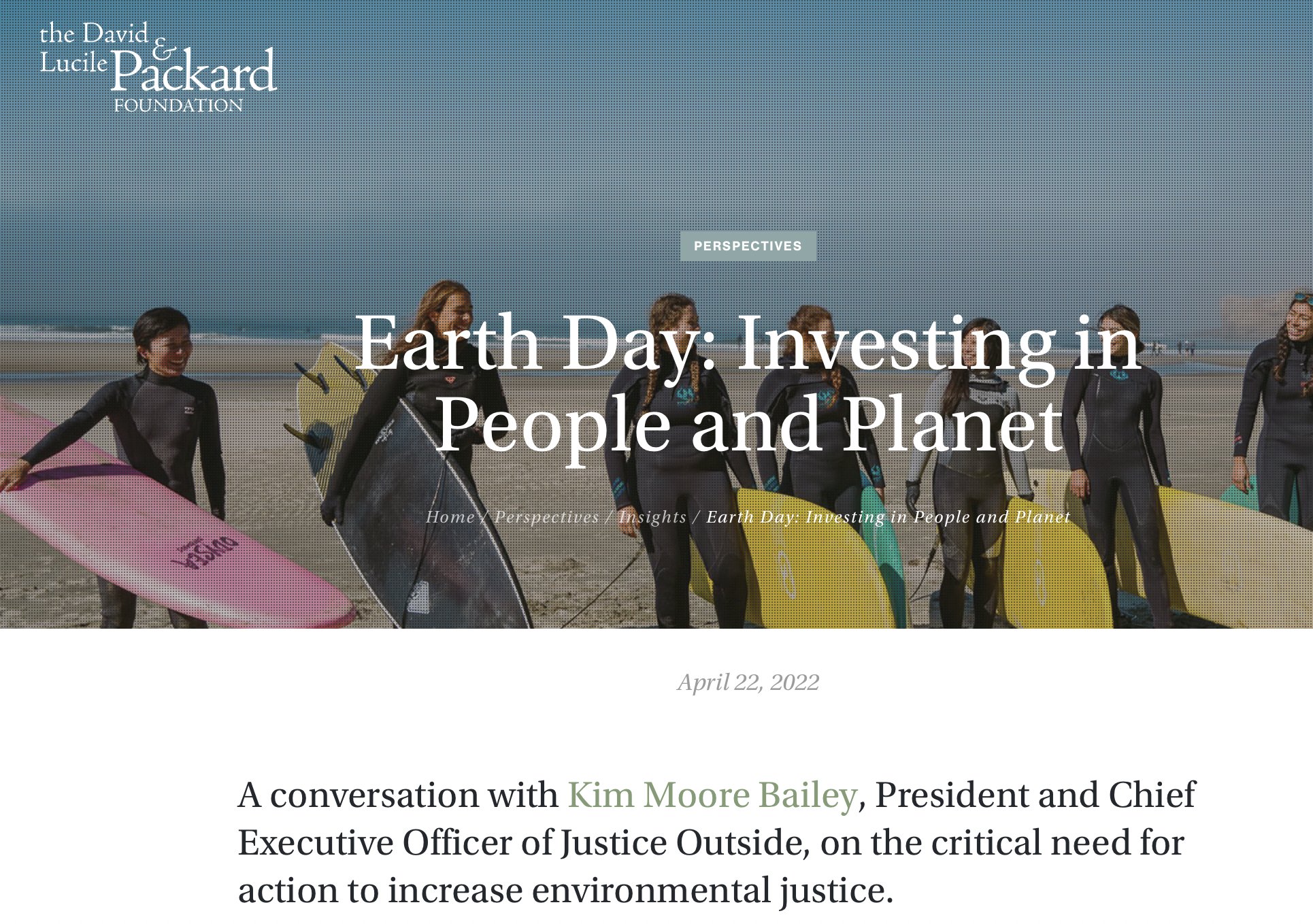When Black, Indigenous, and People of Color lead outdoor organizations and lead on climate and environmental justice, we root our work in joy, celebration, and community connection. And we know that movements rooted in authentic connection and joy are the movements that last, the movements that build momentum, and the movements that continue to bring more and more people into their folds.
These are the words of Kim Moore Bailey, President and Chief Executive Officer of Justice Outside, featured on the Packard Foundation’s blog on Earth Day, 2022. In my role providing occasional writing support to the Packard Foundation, I had the good fortune of getting to edit this piece before it went live.
I always feel immense satisfaction in my work, but my small role in this project gave me even more joy than usual. Some twenty years ago, when I got my MFA in creative nonfiction writing, I focused on the history of the environmental movement and nature writing in the U.S.
What I learned from the books I read and the faculty advisors I studied with fascinated me. But already deeply worried about environmental trends moving in the wrong direction, I also wondered. Why is the messaging of this movement not working, and how do we get people to care?
The clues were all around me, but I was still blind.
Clue #1:
White men wrote most of the history and books I studied. Also, all three of my faculty advisors were white men.
Clue #2:
My studies focused on how the dominant culture separates itself from nature and the authors I studied struggled to reconcile this.
Clue #3:
The history of Darwin and Linnaeus and westward expansion and preservation through national parks and the works of white men were well worth reading, instructive and compelling (The Spell of the Sensuous by philosopher David Abrams, Arctic Dreams by Barry Lopez, The Land Ethic by Aldo Leopold). And yet, the works by the few women on my reading list — Annie Dillard’s Pilgrim at Tinker Creek, Terry Tempest Williams Refuge: An Unnatural History of Family and Place, and Solar Storms by Chickasaw author Linda Hogan — illuminated the subject matter in completely different ways. (And why did my reading solely focus on the U.S.? Fortunately, I went to lectures and heard from people like Vandana Shiva.)
Today, I see clearly what I couldn’t quite figure out back then. My faculty advisors and the books I was reading were full of wisdom, but why didn’t more people care? Why could I never translate what I learned into an effective rallying cry without sounding disconnected, hypocritical, holier than thou and preachy? It was because the movement was privileged and elitist and incomplete with key issues, leaders and voices unacknowledged and invisible, through systematic exclusion, oppression and silencing.
In spite of the immense challenges we face, supporting storytelling efforts like the Justice Outside post, and other critical work to change the narrative like Rethink Outside, and seeing the dominant culture’s blinders coming down, seeing a re-centering of the environmental and outdoor movements led by Black and Indigenous and other leaders of color demanding right relationships with each other and earth, gives me joy and hope.
To challenge people and systems to be in right relationship with each other and the earth, that’s the rallying cry and work at hand for each and every one of us.
